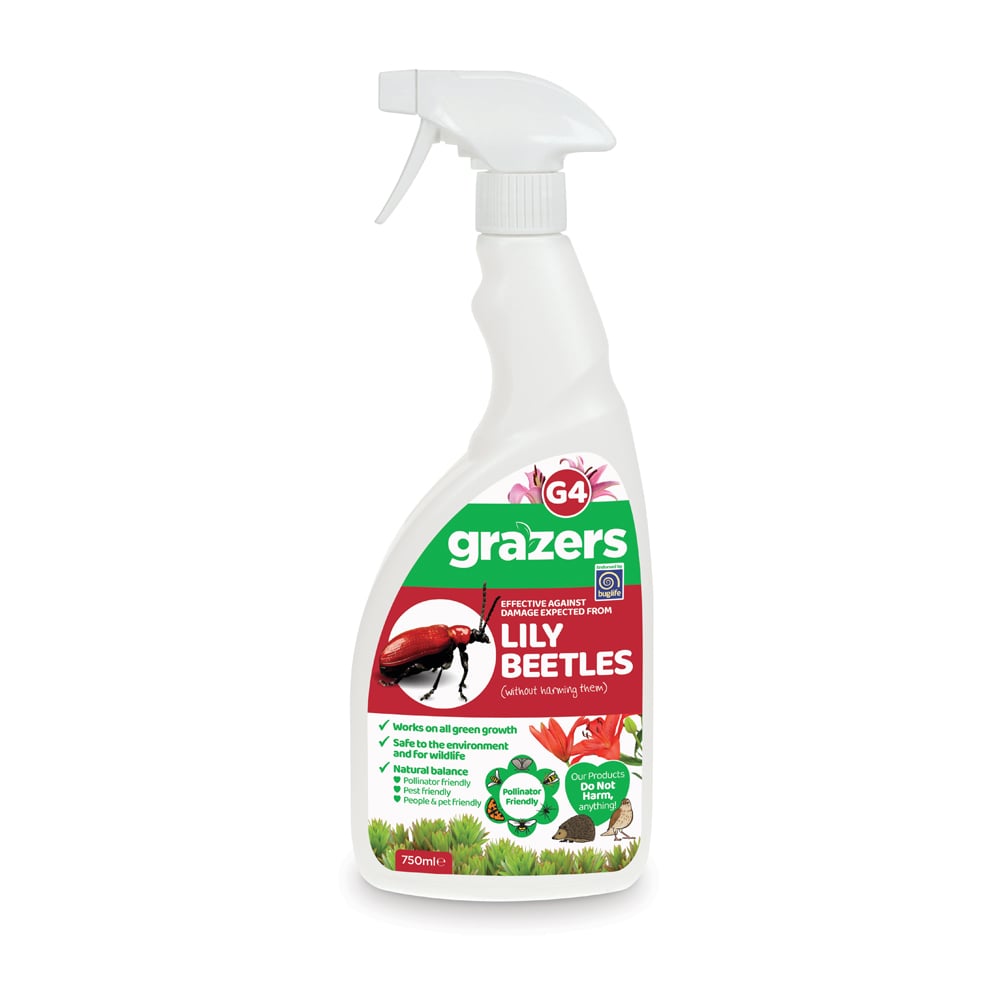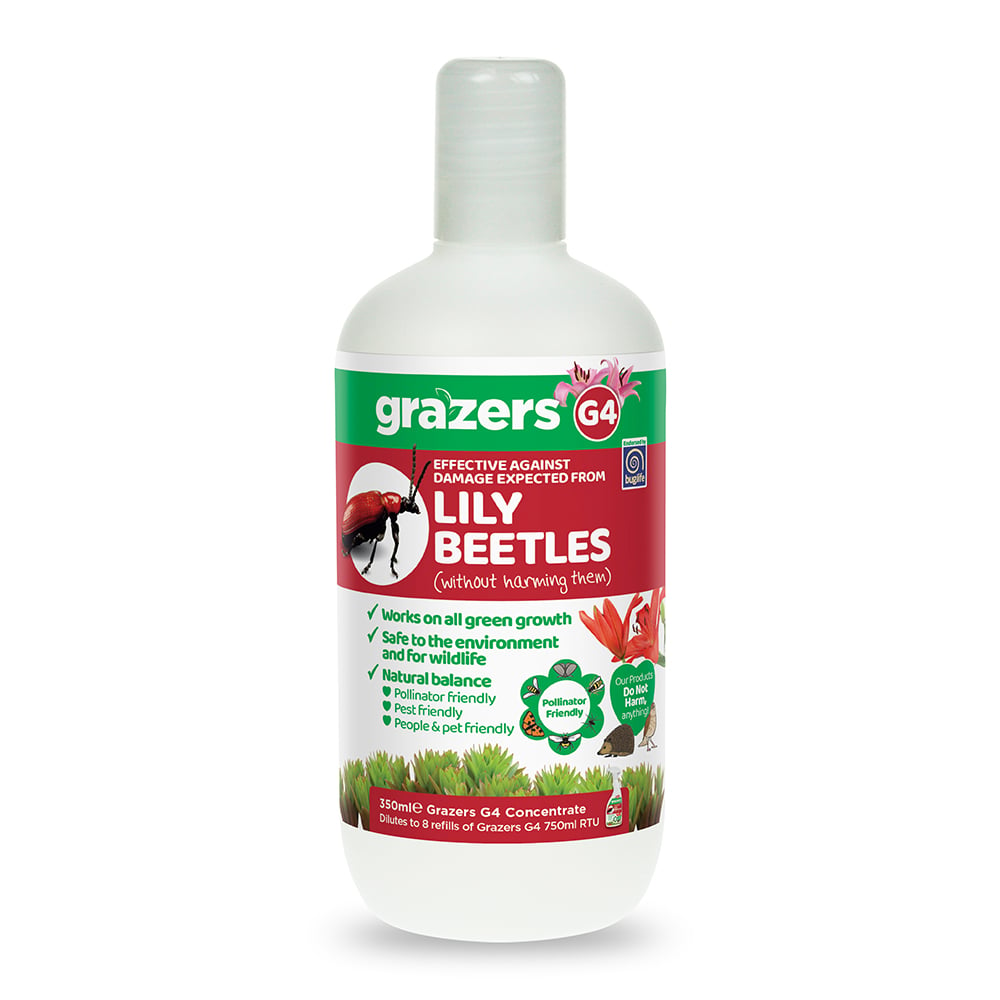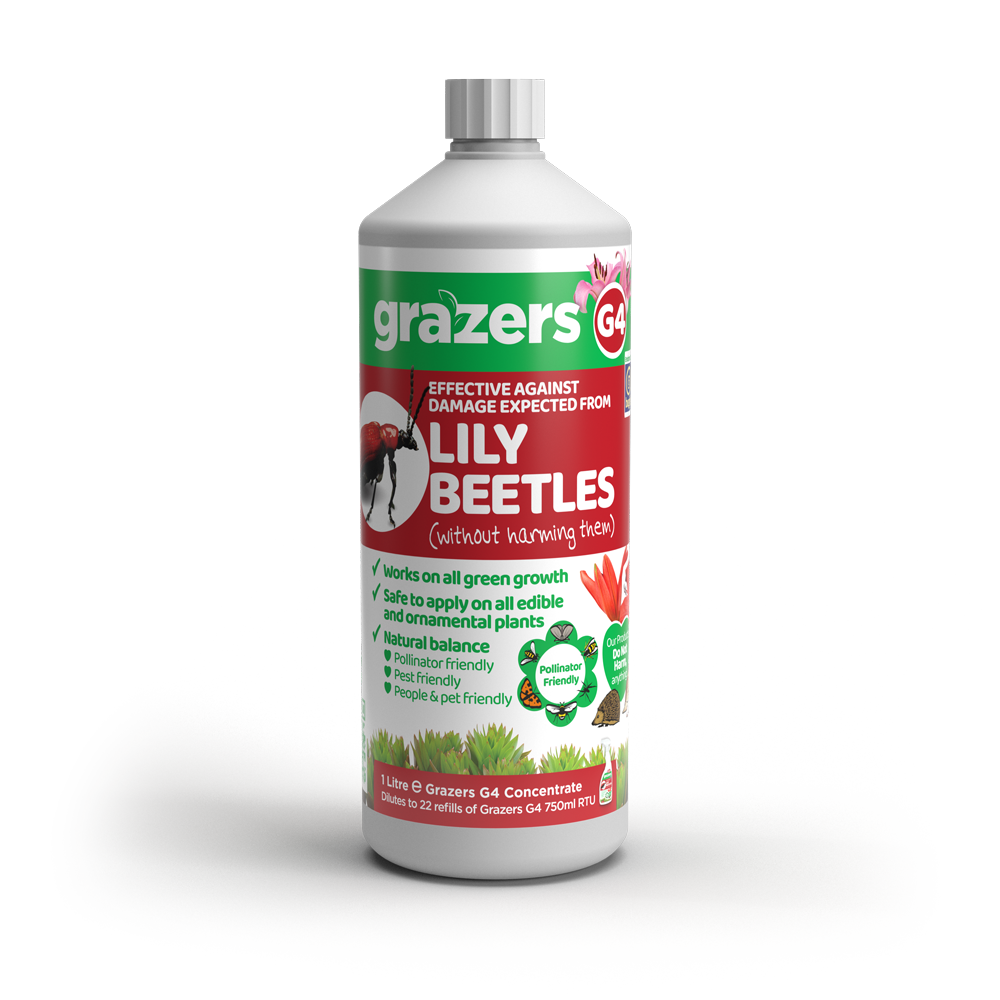Grazers Lily Beetle Spray Organic Garden Use
Grazers Lily Beetle Spray Organic Garden Use - 750ml Spray is backordered and will ship as soon as it is back in stock.
Why Use Lily Beetle Spray?
Lily beetles are the number one pest of lilies. They can destroy a lily plant within days. Both the adult beetles and their larvae consume lily leaves, flowers, and buds, causing extensive damage.
How Does Grazers Lily Beetle Spray Work?
This easy-to-use spray coats the leaves, preventing damage while also benefiting plant health due to its unique formula.
Application Instructions
For best results, apply proactively every 7-10 days upon first sighting (from March onwards, depending on climate and region). Regular application helps plants thrive, reduces egg laying, and prevents larvae infestations.
Key Ingredients
The spray is based on a specific calcium chloride solution, an organic dispersant, and a surfactant. The calcium source is a foliar fertilizer already used in food production, though at much lower rates than typical fertilizer recommendations.
Note: This product does not contain any animal by-products.
Coverage and Product Sizes
- 750ml spray: Covers up to 30 sq.m.
- 350ml concentrate: Dilutes to make 7 litres.
- 1L concentrate: Dilutes to make 20 litres.
Reviews
Reviews
Specifications
Specifications
Based on a specific calcium chloride solution, organic dispersant plus surfactant. The calcium source is a foliar fertiliser already used on veg/fruit and salad crops and in food production, though our inclusion is at much lower rates than fertiliser recommendation.
It does NOT contain any animal by products
-750ml spray covers up to 30sq.m. -350ml concentrate dilutes to make 7 litres -1L concentrate dilutes to make 20 litres
More Information
More Information
Adult beetles about 5-8mm (about 1/4in) long, bright red with a black head and legs emerge from the soil from late March to May, laying eggs from April until September. They overwinter in sheltered places, often in the soil but not always near lilies. Eggs are laid on the underside of leaves in groups of up to 12-15; they vary in colour from bright orange to nearly red. The grubs have dirty orangey bodies and cover themselves with their own excreta; this gives them some protection and they can be mistaken for birds’ droppings. They then fall onto the ground and pupate.







